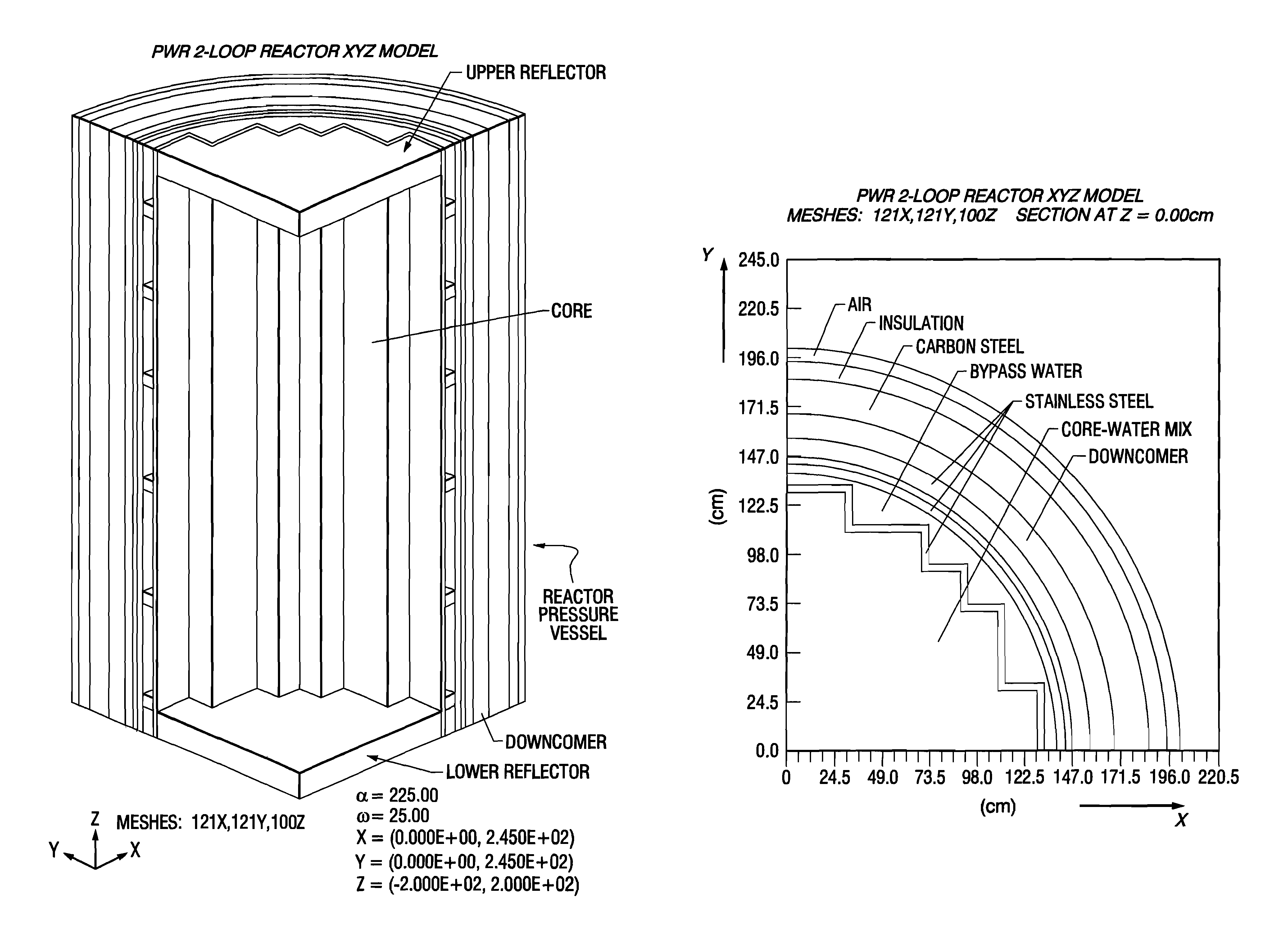Reactor dosimetry applications using a parallel 3-D radiation transport code
a radiation transport code and reactor technology, applied in the field of radiation field distribution calculation, can solve the problems of requiring large computational resources to solve this problem, and the significant computational resources required may preclude the use of single-processor workstations to solve such problems
- Summary
- Abstract
- Description
- Claims
- Application Information
AI Technical Summary
Benefits of technology
Problems solved by technology
Method used
Image
Examples
example 1
RAPTOR-M3G Parallel Performance Analysis
[0050]The transport calculations discussed in the Examples were performed with RAPTOR-M3G running on a 20 processors computer cluster, i.e., EAGLE-1. The cluster was composed of 5 nodes with 2 dual-core dual processor AMD Opteron 64-bit architecture. The cluster total memory, i.e., RAM, available was 40 GByte; the network interconnection was characterized by 1 GBit / s bandwidth. With this hardware configuration, RAPTOR-M3G completed a full 3D transport calculation for a 2-loop PWR in approximately 106 minutes on 20 processors. No significant differences in performance were observed using the DTW, TW, or ZW differencing schemes.
[0051]Moreover, a simple test problem was set up to analyze the parallel performance of the code. The test problem consisted of 50×50×50 cm box with a uniform distributed fixed source, discretized with a 1 cm uniform mesh. An S8 quadrature set and P0 isotropic scattering was used, along with a one energy group cross secti...
example 2
Comparison of Measured Dosimetry Responses with RAPTOR-M3G Calculated Responses
[0053]A comparison was conducted between measured dosimetry responses and corresponding predictions obtained with RAPTOR-M3G. The IRDF-2002 Dosimetry Library (I. Kodeli and A. Trkov, “Validation of the IRDF-2002 Dosimetry Library,” Nuclear Instruments and Methods in Physics Research Section A: Accelerators, Spectrometers, Detectors and Associated Equipment, Vol. 57, Issue 3, pp. 664-681 (2007)) was used to generate the calculated dosimetry responses for the neutron reactions listed in Table 1.
[0054]Measured dosimetry responses for the reactions listed in Table 1 were compared with the responses calculated by RAPTOR-M3G.
[0055]
TABLE 1Neutron Reactions Measured By The Dosimetry SystemMaterialReactionCopper63Cu(n,α)60CoIron54Fe(n,p)54MnNickel58Ni(n,p)58CoUranium238U(n,f)137CsNeptunium237Np(n,f)137Cs
[0056]The reactions listed in Table 1 were measured using Cadmium shielded metal foils; therefore, the thermal c...
PUM
 Login to View More
Login to View More Abstract
Description
Claims
Application Information
 Login to View More
Login to View More - R&D
- Intellectual Property
- Life Sciences
- Materials
- Tech Scout
- Unparalleled Data Quality
- Higher Quality Content
- 60% Fewer Hallucinations
Browse by: Latest US Patents, China's latest patents, Technical Efficacy Thesaurus, Application Domain, Technology Topic, Popular Technical Reports.
© 2025 PatSnap. All rights reserved.Legal|Privacy policy|Modern Slavery Act Transparency Statement|Sitemap|About US| Contact US: help@patsnap.com



